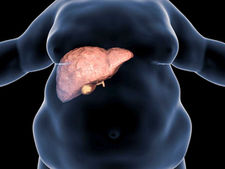
Anal Fissure and Fistulas
Fissures and fistulas occurring in the anal area are among the disorders that our hospital's general surgery clinic deals with.
What are Anal Fissures and Fistulas?
Anal fissures are cracks and tears in the anus. They are also known as anal fissures. It may occur due to long-term constipation and excessive straining while defecating. Colitis and Crohn's diseases can trigger anal fissures. Fistulas are small spaces formed between the end of the intestine and the anus. They usually occur due to perianal abscesses. Other reasons include insufficient fluid intake and low consumption of fibrous foods.
What are the Symptoms of Anal Fissure and Fistula?
Symptoms of anal fissure may include tenderness in the anus, burning, pain, swelling, discharge, irritation and difficulty in defecation. Since these symptoms can be confused with hemorrhoids and condyloma symptoms, it is important to see a doctor early. If left untreated, it may cause complications and treatment becomes difficult. Depending on their location, fistulas are vesicovaginal between the vagina and bladder, enterovesical between the bladder and intestine, vesicouterine between the bladder and uterus, ureterovaginal between the vagina and ureter, urethrovaginal between the vagina and urethra, colovesical between the large intestine and bladder, and vagina and rectum. Between them, they are divided into rectovaginal.
How to Diagnose Anal Fissure and Fistula?
A detailed physical examination is required for anal fissure and fistula when making a diagnosis to avoid confusion with other anal diseases. If the doctor deems it necessary, diagnosis can also be made through endoscopy to examine the rectum and colon area.
What are the Anal Fissure and Fistula Treatments?
For the treatment of anal fissure and fistula, the first step is a well-planned diet and, if necessary, medications or creams that facilitate defecation. If the crack has existed for a long time and is large, surgery may be required. During the operation, the abscess can be drained and the path of the abscess can be closed by stitching the fistula channel. Biological adhesive, stopper and medical clips can be used to close the anus. Fistulas can be burned with laser energy. Additionally, the abscess can be burned with radio waves by entering the fistula channel through fistuloscopy, that is, a camera. The post-treatment period is very important and requires routine doctor checks. After the examination, our general surgeon will diagnose the disease with appropriate diagnostic methods and, if deemed necessary, will contact our infectious diseases specialist and help you by planning the treatment.
FOR INFORMATION AND APPOINTMENT, YOU CAN LEAVE YOUR NUMBER OR ASK OUR EXPERTS
YOU CAN LEAVE YOUR NUMBER FOR INFORMATION AND APPOINTMENT AND ASK QUESTIONS TO OUR EXPERTS



-04.png)
-06.png)
-05.png)
-08.png)
-07.png)























